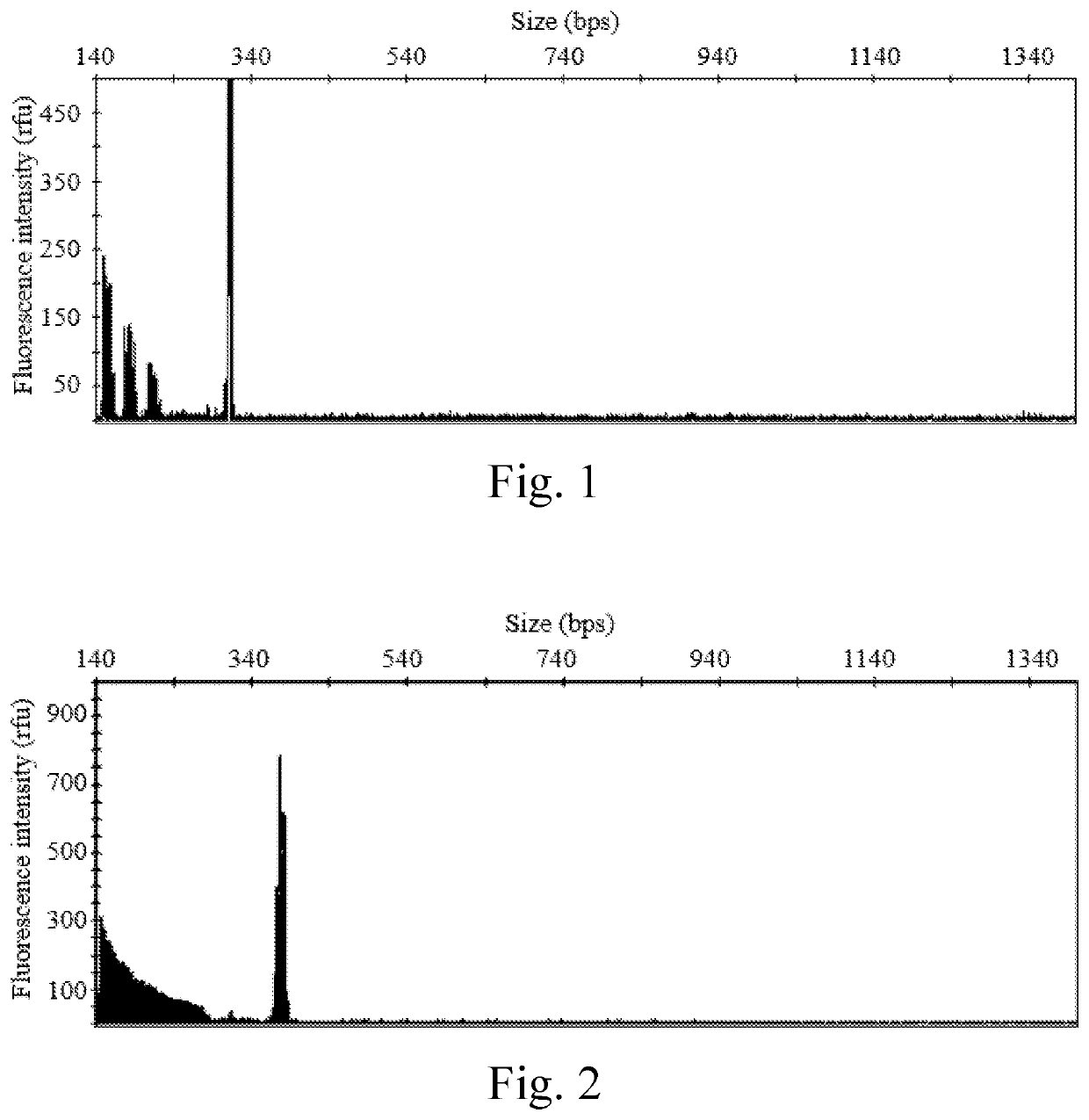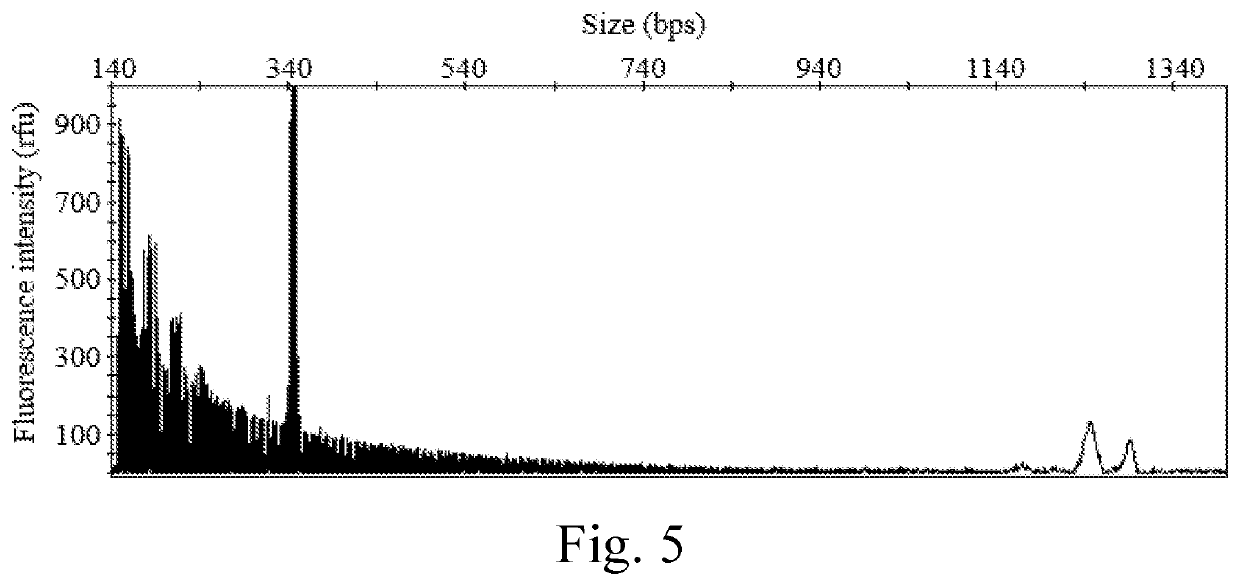Kits for diagnosing fragile x syndrome and uses thereof
- Summary
- Abstract
- Description
- Claims
- Application Information
AI Technical Summary
Benefits of technology
Problems solved by technology
Method used
Image
Examples
example 1
Evaluation of the Diagnostic Accuracy of the Present Kit
[0089]1.1 Positive Reference Samples
[0090]Twelve positive reference samples was used to evaluate the diagnostic accuracy of the present kit, including,[0091](1) two intermediate samples: the DNA samples isolated from the human subjects respectively having alleles 46 / Y (i.e., the male subject having 46 CGG repeats on the X chromosome, and no corresponding allele on the Y chromosome), and alleles 54 / Y (i.e., the male subject having 54 CGG repeats on the X chromosome, and no corresponding allele on the Y chromosome);[0092](2) four permutation samples: the DNA samples isolated from the human subjects respectively having alleles 29 / 85 (i.e., the female subject having 29 CGG repeats on one X chromosome, and 85 CGG repeats on the other X chromosome), alleles 36 / 142, alleles 57 / Y, and alleles 118 / Y;[0093](3) four full mutation samples: the DNA samples isolated from the human subjects respectively having alleles 30 / >200 (i.e., the femal...
example 2
Determination the CGG Repeating Number of Human Subjects
[0103]The whole blood samples were isolated from 120 pregnant women, including 56 normal samples, 14 intermediate samples, 41 premutation samples, and 9 full mutation samples. The DNA samples extracted therefrom were mixed with the present primers, and then processed in accordance with the procedure mentioned in Materials and Methods of the present disclosure. The data was summarized in Table 8.
TABLE 8Determination of CGG repeats in human subjects by the present kitSample NO.Allele typeRepeating NumberDiagnostic result1Normal10 / 3213 / 322Normal36 / 3636 / 363Normal29 / 3029 / 304Normal29 / 4029 / 405Normal29 / 3029 / 306Normal22 / 2922 / 297Normal29 / 3629 / 368Normal29 / 2929 / 299Normal29 / 2929 / 2910Normal19 / 3019 / 3011Normal30 / 3030 / 3012Normal29 / 3029 / 3013Normal31 / 3631 / 3614Normal24 / 3024 / 3015Normal29 / 4129 / 4116Normal29 / 2929 / 2917Normal30 / 3730 / 3718Normal31 / 3631 / 3619Normal29 / 2929 / 2920Normal29 / 3129 / 3121Normal29 / 2929 / 2922Normal29 / 3029 / 3023Normal29 / 2929 / 2924Normal34 / 3...
PUM
| Property | Measurement | Unit |
|---|---|---|
| Molar density | aaaaa | aaaaa |
| Molar density | aaaaa | aaaaa |
| Volume | aaaaa | aaaaa |
Abstract
Description
Claims
Application Information
 Login to View More
Login to View More - R&D
- Intellectual Property
- Life Sciences
- Materials
- Tech Scout
- Unparalleled Data Quality
- Higher Quality Content
- 60% Fewer Hallucinations
Browse by: Latest US Patents, China's latest patents, Technical Efficacy Thesaurus, Application Domain, Technology Topic, Popular Technical Reports.
© 2025 PatSnap. All rights reserved.Legal|Privacy policy|Modern Slavery Act Transparency Statement|Sitemap|About US| Contact US: help@patsnap.com



